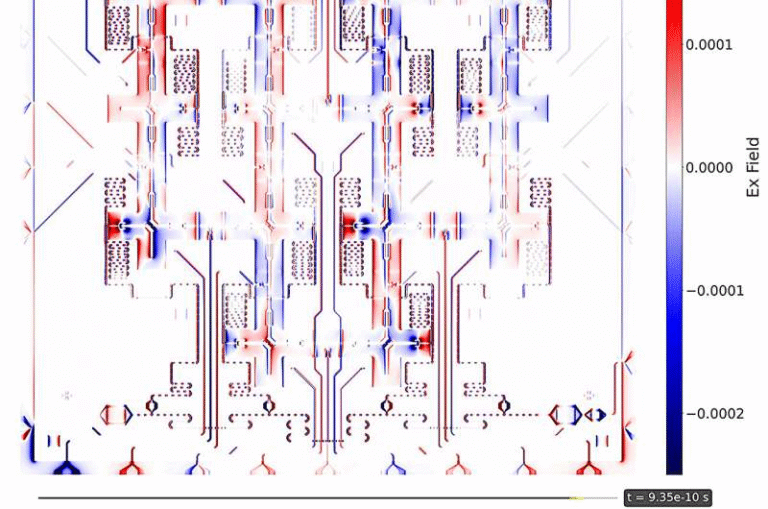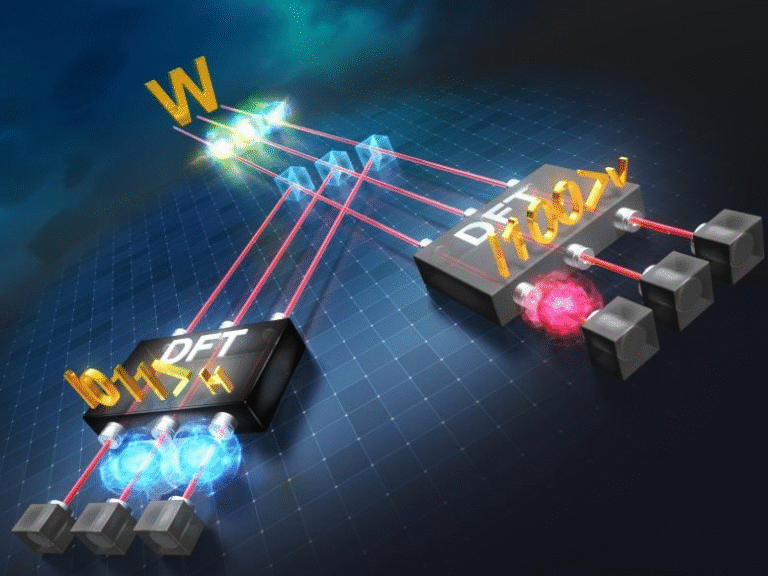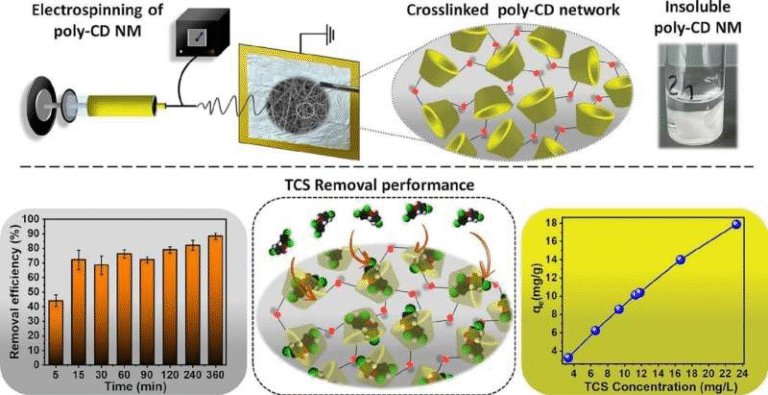Common Crystal, Extraordinary Potential: How Strontium Titanate Could Revolutionize Low-Temperature Light Technology

Researchers at Stanford University have discovered that an everyday crystal, strontium titanate (STO), could hold the key to advancing technologies that operate at cryogenic temperatures—temperatures close to absolute zero. This new finding, published in Science in October 2025, could have huge implications for fields like quantum computing, superconductivity, and space exploration, where materials are required to perform flawlessly under extreme cold.
Let’s dive into what makes this discovery so exciting, the science behind it, and why a humble crystal that has been sitting “on the shelf” for decades might now be at the heart of next-generation cryogenic devices.
The Challenge of Extreme Cold
Quantum computers and superconducting devices are transforming modern science and technology. The 2025 Nobel Prize in Physics even recognized breakthroughs in superconducting quantum circuits—the building blocks of ultra-powerful computers. But there’s a catch: these systems only work at cryogenic temperatures.
At such low temperatures, most materials lose their useful optical, electrical, and mechanical properties. They become brittle, unresponsive, or unstable. This limitation has slowed progress in building reliable components for quantum circuits, such as light modulators, switches, and transducers.
So, when Stanford engineers began searching for materials that could maintain, or even enhance, their properties at low temperatures, they didn’t expect to find the answer in something as ordinary and inexpensive as strontium titanate.
What Makes Strontium Titanate Special
Strontium titanate (SrTiO₃) is a crystalline material that has been studied for decades. It’s not rare or expensive—it’s even used as a diamond substitute in jewelry. In the lab, STO has often served as a substrate material, a kind of base layer for growing other functional compounds. But until now, no one had tested its optical and electromechanical properties in the extreme cold.
The Stanford team discovered that STO performs spectacularly at cryogenic temperatures—its optical and mechanical properties not only remain stable but actually improve dramatically. In other words, the colder it gets, the better it performs.
At 5 Kelvin (about −450°F), STO’s electro-optic response—the way it changes light in response to an electric field—was 40 times stronger than lithium niobate, the most widely used electro-optic material today. That’s a remarkable leap in performance.
The Science of Nonlinear Optics
The heart of this discovery lies in STO’s nonlinear optical behavior. In simple terms, when you apply an electric field to STO, its optical and mechanical properties shift in ways that are far from linear. This “nonlinear” response can be harnessed to manipulate light—changing its frequency, phase, or intensity—far more efficiently than other materials.
This property, known as the electro-optic effect, is what makes STO so valuable for developing quantum transducers and light-based switches—components that convert signals between different forms (for instance, from microwave to optical) within quantum systems.
Moreover, STO is piezoelectric, meaning it physically expands or contracts when an electric field is applied. This feature opens up exciting possibilities for creating electromechanical devices that work perfectly even in the deepest cold, such as sensors or actuators for spacecraft and cryogenic fuel systems.
A Tunable Material With Record Performance
One of the most astonishing aspects of this study is how tunable strontium titanate is. By adjusting its atomic composition slightly, the team was able to fine-tune its performance even further.
The researchers substituted a portion of the oxygen atoms in the crystal with heavier oxygen isotopes—atoms of oxygen that contain two extra neutrons. By replacing exactly 33% of the oxygen atoms, they pushed STO closer to a state called quantum criticality, a special threshold where small changes in conditions can cause dramatic effects in material properties.
This tweak resulted in a fourfold increase in tunability, making STO the most electrically and piezoelectrically tunable material known at low temperatures. For comparison, its nonlinear optical effects were 20 times stronger than lithium niobate and almost three times higher than barium titanate, which previously held the record among cryogenic materials.
How It Works: Quantum Criticality and Nonlinear Behavior
STO’s remarkable behavior is tied to a concept known as quantum criticality. In physics, a material near quantum criticality sits on the edge of a phase transition—like being perpetually poised between two different states. Quantum fluctuations dominate its behavior, allowing even small electric or magnetic fields to produce large responses.
In STO, these fluctuations enhance both dielectric and electro-optic effects, leading to exceptional tunability. The closer STO is pushed toward this critical point—through isotope substitution or structural modification—the stronger these effects become.
This discovery is important not just for STO itself but also for material science as a whole. It shows that researchers can engineer materials at the quantum level to achieve previously impossible performance, a strategy that could uncover new nonlinear materials in the future.
Practical Advantages: Easy to Make and Integrate
Beyond its scientific novelty, STO is remarkably practical. It can be:
- Synthesized in labs without exotic materials.
- Modified structurally to optimize performance.
- Processed with standard fabrication tools used in semiconductor and photonics industries.
- Produced at wafer scale, meaning it can be integrated into commercial devices relatively easily.
These advantages make STO not just an interesting material for research, but a viable candidate for real-world applications, particularly in cryogenic and quantum systems where specialized materials are rare and costly.
Who’s Behind the Study
The research was led by Professor Jelena Vuckovic, an electrical engineering expert at Stanford, and Dr. Christopher Anderson, a former postdoctoral scholar in her lab who now teaches at the University of Illinois Urbana-Champaign. Dr. Giovanni Scuri, another postdoctoral researcher, also played a key role in uncovering STO’s unexpected strengths.
The project received partial funding from Samsung and Google’s Quantum AI division, both of which are actively seeking materials that can support next-generation quantum hardware.
Implications for Technology
The potential applications of STO are wide-ranging:
- Quantum Computing
STO could enable better optical switches and quantum transducers, vital for connecting qubits (quantum bits) and transmitting information in quantum circuits. - Cryogenic Photonics
Optical devices that maintain efficiency at cryogenic temperatures could dramatically improve signal processing in quantum systems. - Space Exploration
STO’s piezoelectric properties could make it ideal for cryogenic actuators and sensors in spacecraft, satellites, and deep-space probes that must function in near-absolute zero conditions. - Advanced Materials Engineering
The methods used to enhance STO could guide scientists in designing other quantum-critical materials that show exceptional performance at different temperature ranges or under specific conditions.
Beyond STO: The Bigger Picture of Quantum Materials
The story of STO also highlights a broader trend in physics and materials science—the search for quantum-engineered materials. These are substances designed not just for their chemical composition but for how their atoms and electrons behave under quantum mechanical rules.
Quantum paraelectrics, like STO, are one category of such materials. They hover on the edge of becoming ferroelectric (where electric dipoles align spontaneously) but are stabilized by quantum fluctuations. This delicate balance makes them extremely sensitive to external fields, which is exactly what allows STO to achieve such impressive tunability.
Other quantum-critical materials—like barium titanate, lithium niobate, and certain perovskite oxides—have shown interesting behavior at low temperatures too, but none have matched STO’s combination of stability, affordability, and performance.
What Comes Next
The Stanford team’s next step is to develop actual cryogenic devices using STO, such as light modulators, transducers, and optical switches that can function inside quantum computers. They’re also exploring how to integrate STO with superconducting circuits and microwave-to-optical converters, which are essential for building large-scale quantum networks.
Because STO can be grown and processed using standard semiconductor tools, it could eventually be incorporated into commercial photonic chips and even space-grade systems.
As Professor Vuckovic’s group put it, this discovery wasn’t about inventing a brand-new material from scratch. It was about recognizing the hidden potential of something ordinary—then fine-tuning it with a deep understanding of physics.
The Takeaway
To sum it up, strontium titanate (STO) has gone from being a modest lab material and diamond imitation to a record-breaking crystal for low-temperature light technology. It offers unmatched electro-optic and piezoelectric tunability at cryogenic temperatures, outperforms all known materials in its class, and is both abundant and manufacturable.
Its discovery opens new doors for quantum computing, cryogenic optics, and space-ready devices. More importantly, it demonstrates a powerful idea: that by exploring well-known materials in new regimes—like extreme cold—we can uncover properties that redefine what’s possible in technology.
Research Reference:
Christopher P. Anderson et al., “Quantum Critical Electro-Optic and Piezo-Electric Nonlinearities,” Science (2025).
https://doi.org/10.1126/science.adx8657





